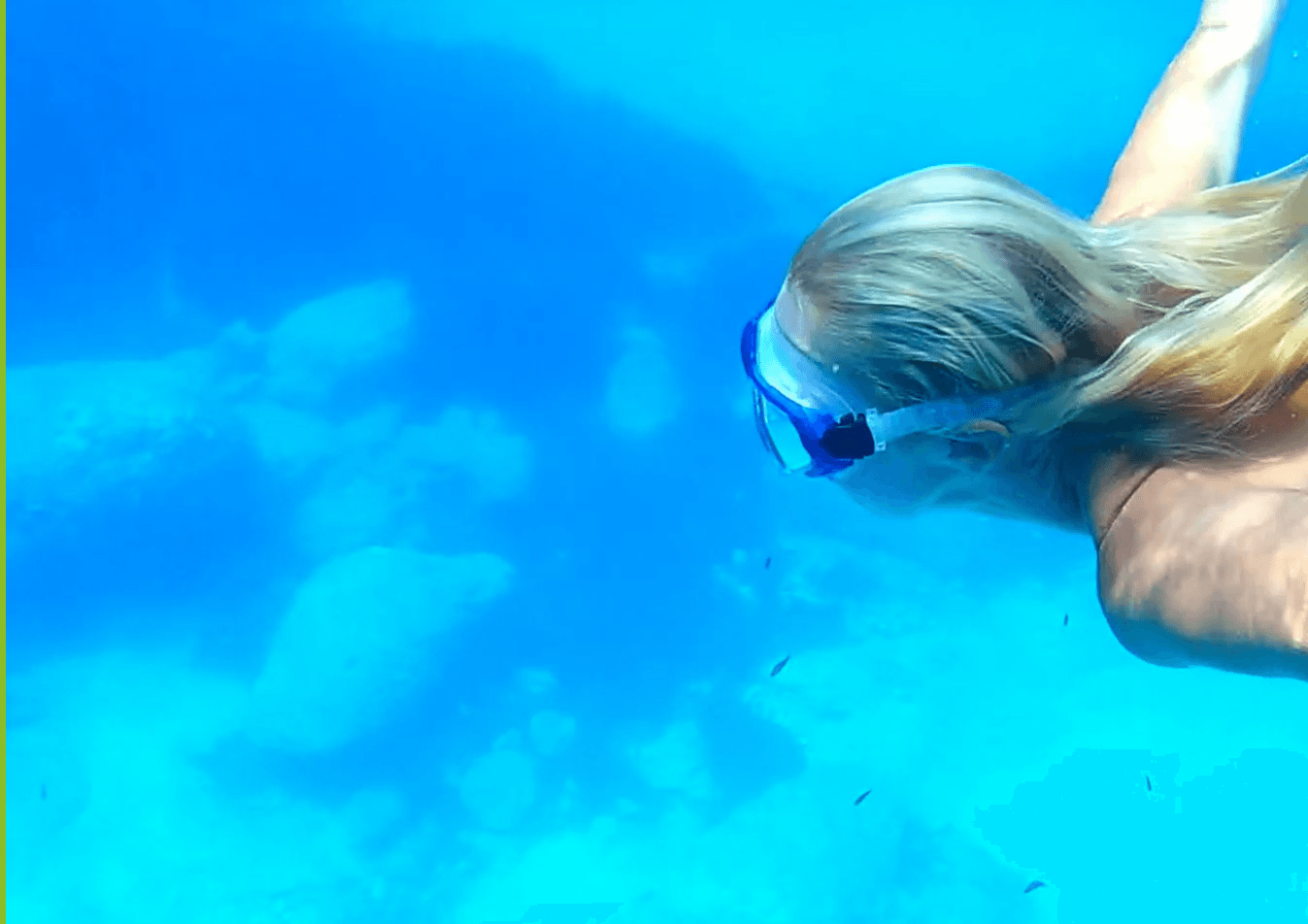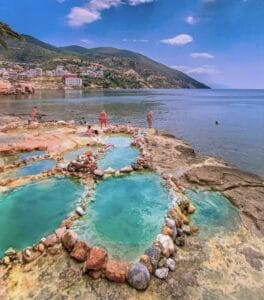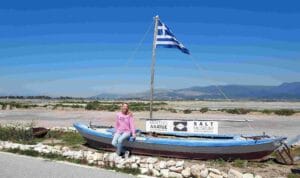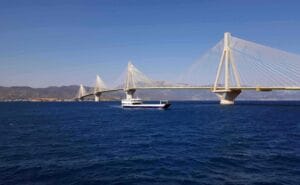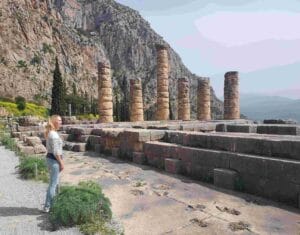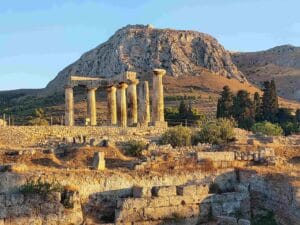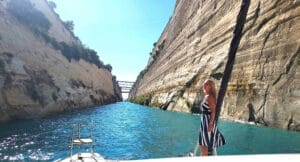After a great start in Greece, sailing Corfu, what would be our next destination? We could sail south, where the beautiful islands Paxos and Anti-Paxos were. Or go the mainland which is east of Corfu, where famous cities Sivota and Parga are. When you travel by bott, nature decides your trip planning most of the times 😉. Also this time, because the day we wanted to leave Corfu, there was a strong wind coming from the south, so that was an easy decision: we wouldn’t go south fighting the wind, but we headed east to the mainland to comfortably get most of the wind now.

Sivota
When we approached Sivota, we could already see what one of the reasons why this is a beloved area for sailors: rocky coves. We saw a boat motoring into 1 of the caves! Of course we would do this later also with our dinghy once we were at anchor.
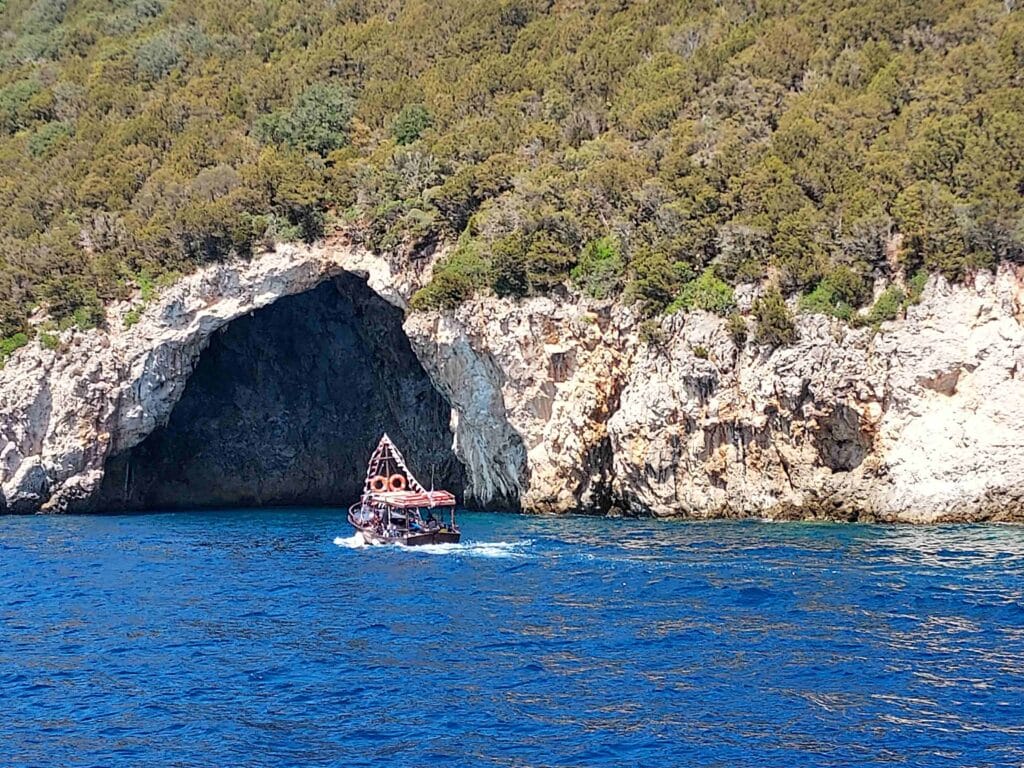

When we approached the Bay of Sivota, there was a nice group of SUPpers (Stand Up Paddle boarders).
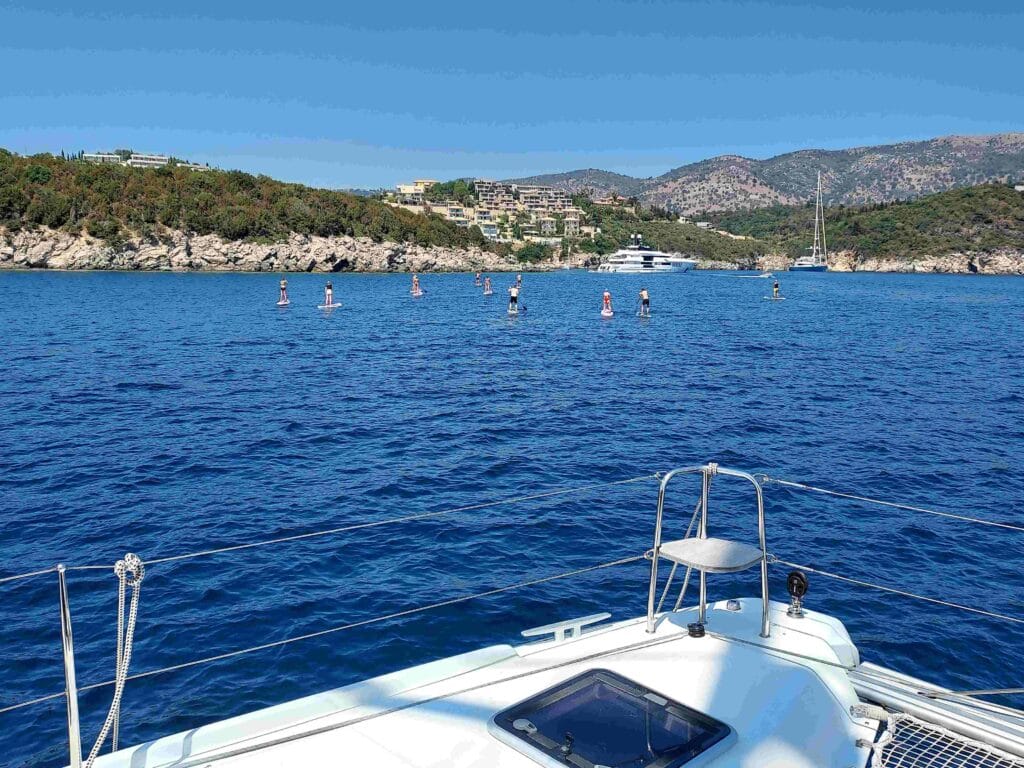
We anchored our boat close to Valtos Beach, where we watched an interesting phenomenon going on. There was a sandbank of about 50 meters long, that connects the beach to a small island in the bay, and at low tide people can walk across it, which was a magical sight. Because for a day at the beach, they took chairs, bags, food etc. with them, walking over the sandbank and sometimes holding bags above their heads! An interesting phenomenon scene that I could watch for hours!

Once you anchor, you have a drink after the nice sail, maybe an afternoon snack. This is also to take some time to check the boat, see if the anchor holds well. And usually after 1 hour, you could sightseeing and at that point, we took our dinghy to see the caves and the nice town of Sivota. Which was small and elegant.
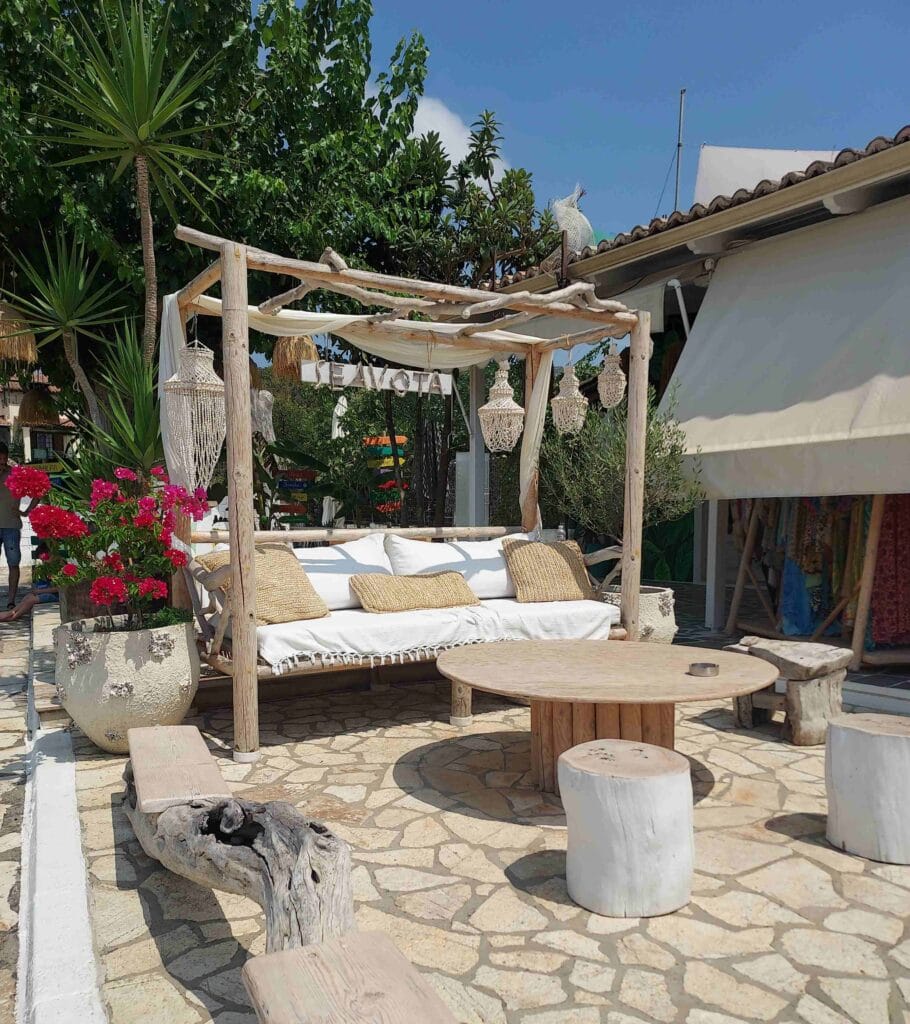
Parga
The next day, we sailed to Parga which was close by, about 3 hours of sailing.
High above the town, you could see the fortress of Parga. It is located on the mountain of the peninsula between Parga and the beach of Valtos. It can be reached on foot from the small port of Parga via stairs and narrow alleys. A stone-paved road leads to it from the beach of Valtos.

Originally, the castle of Parga was built by the Greeks and Normans. The pirate Barbarossa destroyed it in 1537 after which it was rebuilt by the Venetians and in 1792 it was given more or less its current form.
On the surface inside the fortress there were 400 houses where the inhabitants of Parga lived. The Ottomans did not succeed in conquering this fortress for centuries. The fortress was invincible until in 1819 the Ottoman Ali Pasha finally bought the castle from the Venetians. He turned it into a harem.
At the foot of the fortress was a very nice trendy restaurant which offered a great view on the amazing bay and harbor of Parga. Here you could see how beautiful Parga is set against a hill, with colourful houses that descend in steps to the beach and the sea.

Paxos
Paxos (also Paxi) and Antipaxos are two small islands south of Corfu. Paxos is 18 km2 in size and has about 2.500 permanent inhabitants, but in the summer it’s really busy. Around 150,000 and 200,000 tourists visit here every year. The international jet set has also discovered the island, with several wealthy people buying a holiday home here or celebrities coming here on holiday. In the past, Julia Roberts and Pamela Anderson were on the island.
We had heard from our friend Frits that we met the first day in Corfu (he was sailing with his family and friends), that Paxos was a must-see island. For example Lakka in the north, was situated at the border of a beautiful bay.
The sail towards Paxos was peaceful, and from afar we saw the green forests of Paxos, which contrasted beautifully with the blue sea. When we arrived in Lakka and sailed into the sheltered bay, the water was so clear that if felt you could almost touch the seabed with your hands. We took our drone out to film this special bay and there you can see the bright turquoise water.
What you can also see in the drone video above is the yellow lines at the back of the boats. These are called floating lines, landlines, that you tie first at the back of your boat and then to a rock or a tree, so your boat stays in a steady position. Because normally at anchor, the boat starts turning towards where the wind blows it or the current pushes it.
And this bay is very popular which means busy, so it’s a courtesy to others to use as little space as possible and more or less park the boat as if you are in a carparking lot! That also means, that after anchoring, you have to jump in the water (or take your dinghy) and drag the line towards a rock near the coastline or even to a tree and tie it to it. Here you see Gilles performing this action. Luckily the water is still about 23 degrees at this time a year, and had an exotic emerald green color, it’s not a bad experience!
We had a nice view over the bay towards the small town that we also visited in the afternoon, which was a cozy maze of white houses with brightly colored shutters and bougainvillea hanging over the walls. Many houses are covered with ceramic roof tiles. In the evening when the anchor lights lighted up, it was also a pretty sight to look at the small town.
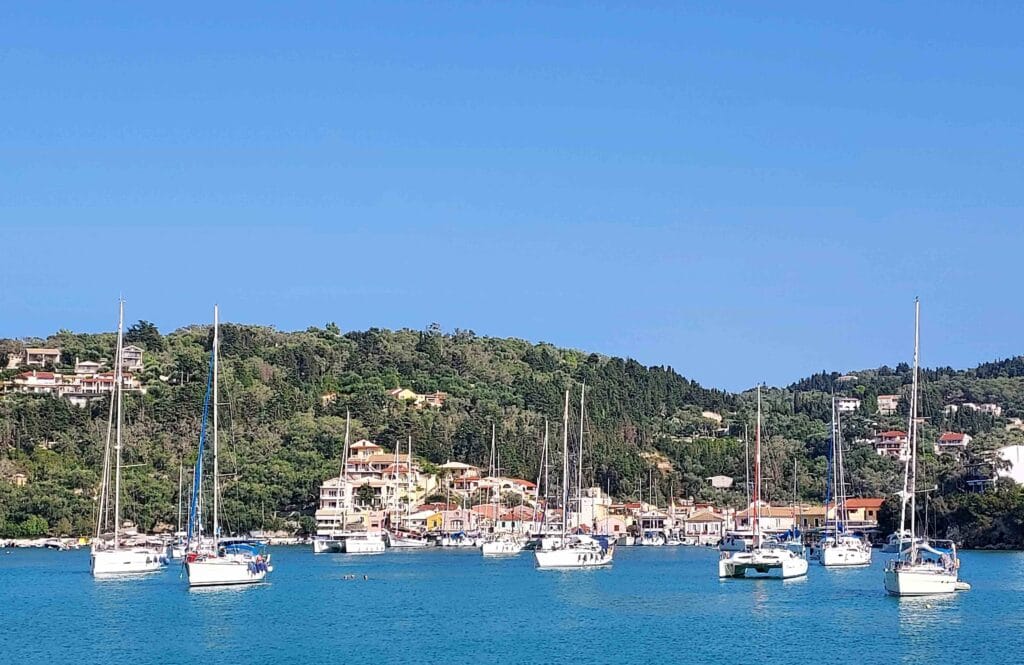
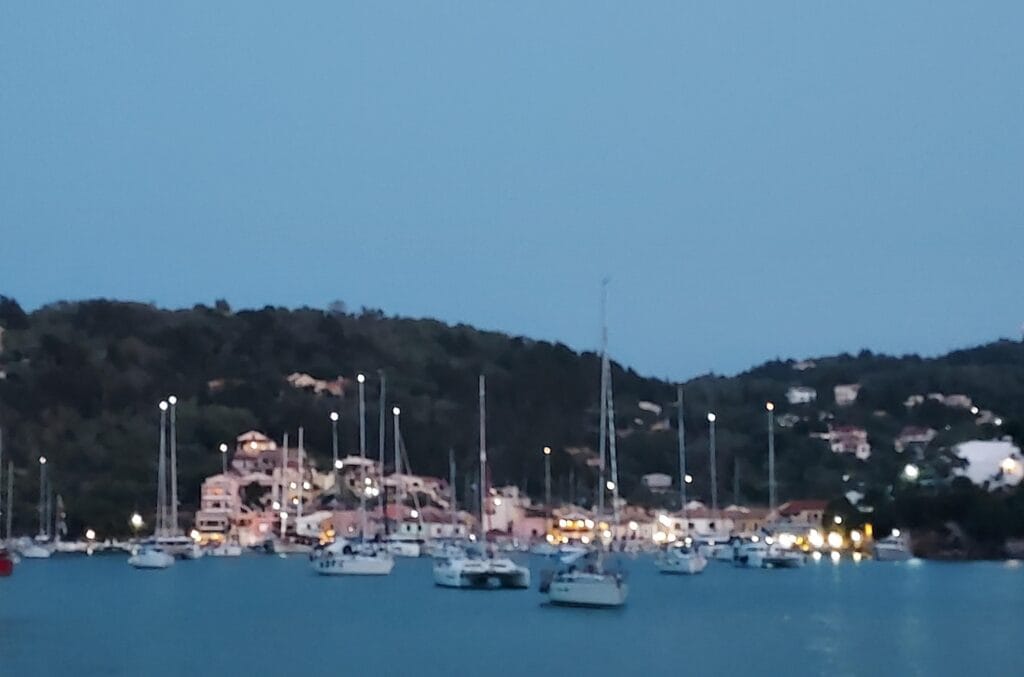
We sailed further south along the eastern coastline of Paxos to enjoy Gaios, which is well-known to sailors, because you sail through a small channel.
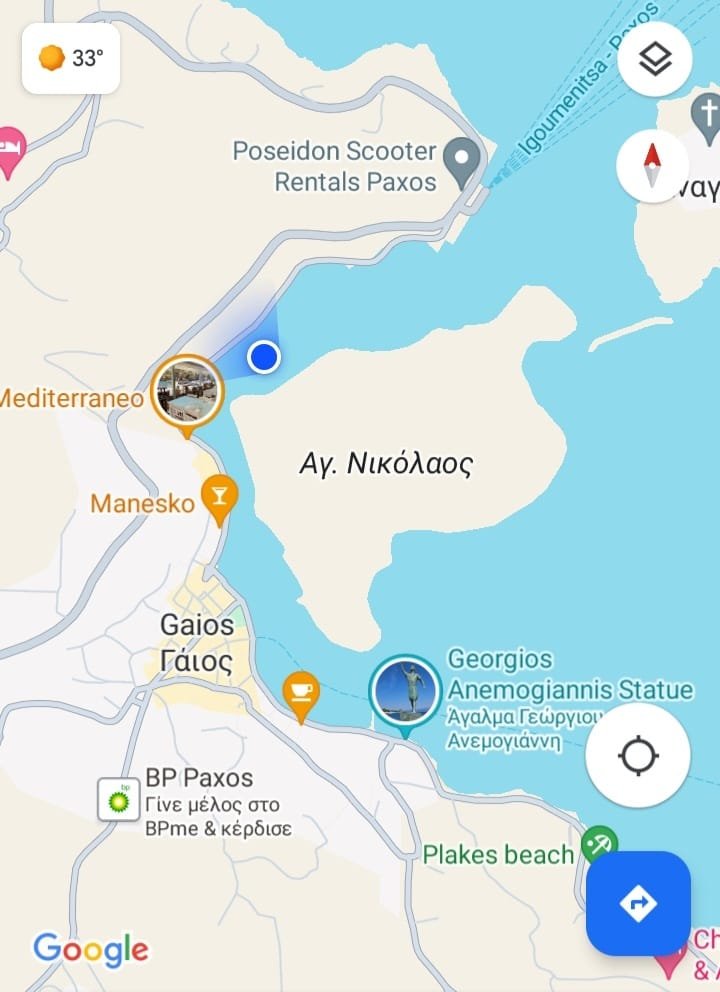
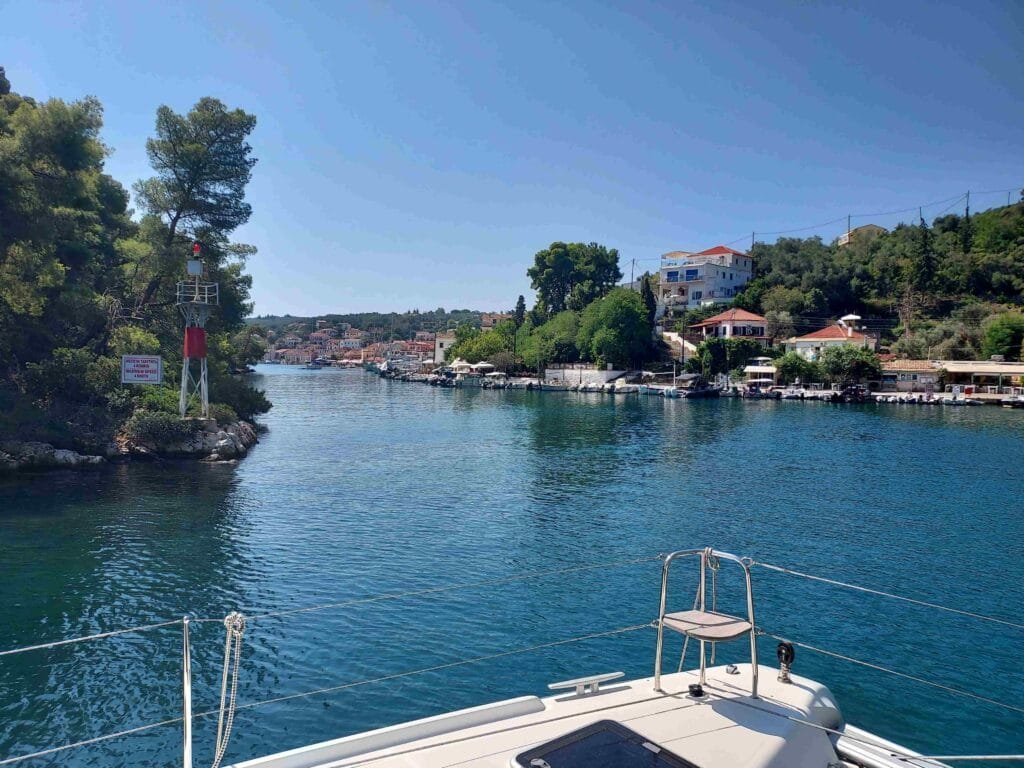
In the channel you see on your right sight the town of Gaios and on the left side the island. Alongside the channel are boats moored and restaurants, café’s and bars.
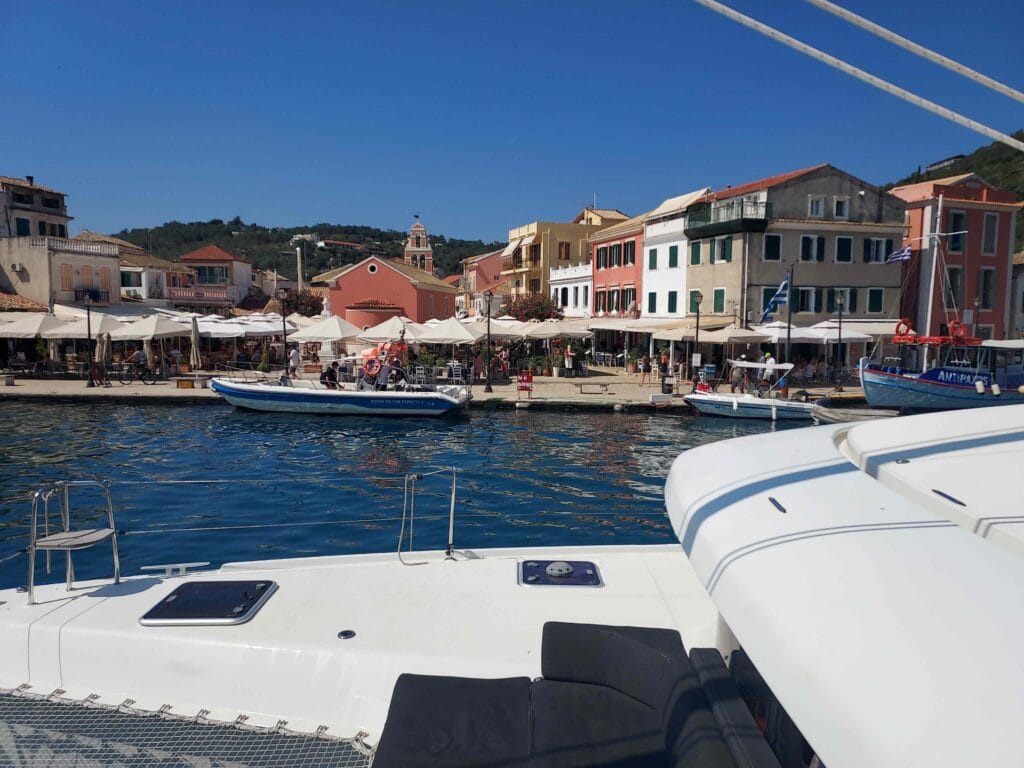
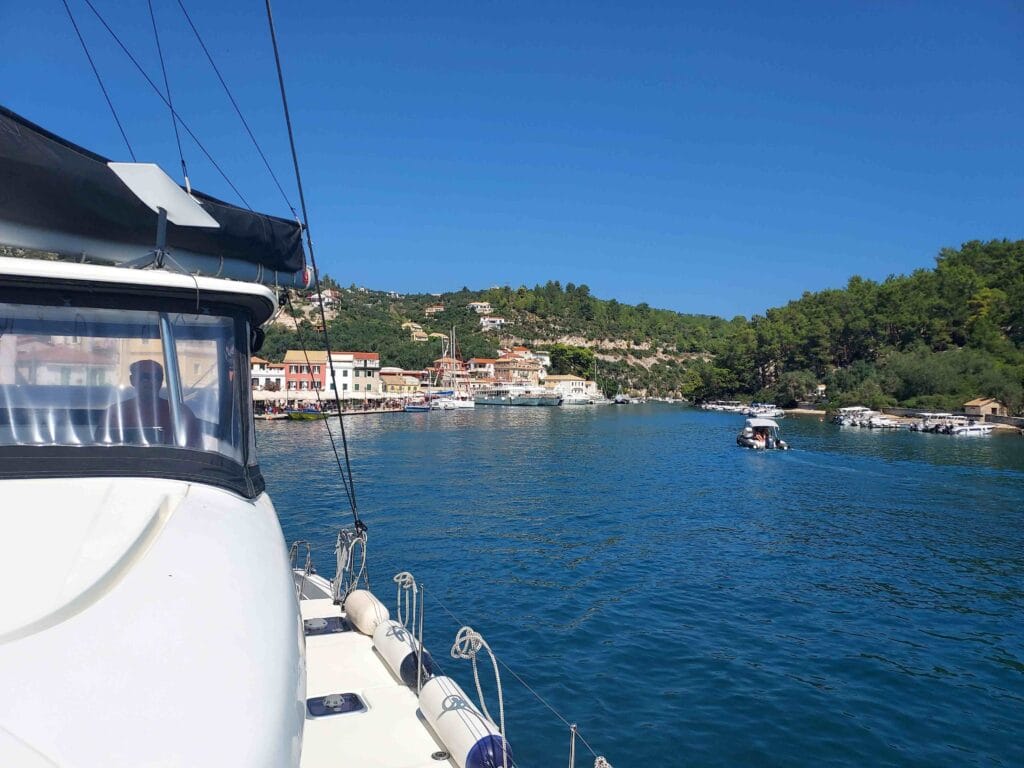
At the entrance of the channel, we saw this boat, it had a white inflatable ring around it the water. This is usually an oil containment buoy, which is used to contain oil or fuel spills. These buoys are often used on ships that are leaking oil or fuel, or during operations where there is a risk of a spill. They act as a physical barrier, holding back the oil or other pollutants and preventing them from spreading in the water.

Blue Caves
Our last stop at Paxos, was on the west coast because we wanted to see what are called ‘Blue caves’. We went there early at 9.00h, so it would not be crowded. It this season it is already less crowded and there was only 3 other small boats there. There are a lot of caves on the islands and mainland of the Ionic Sea, but this one where 3 coves connected to each other at the back, so you could swim from 1 cave to the other.
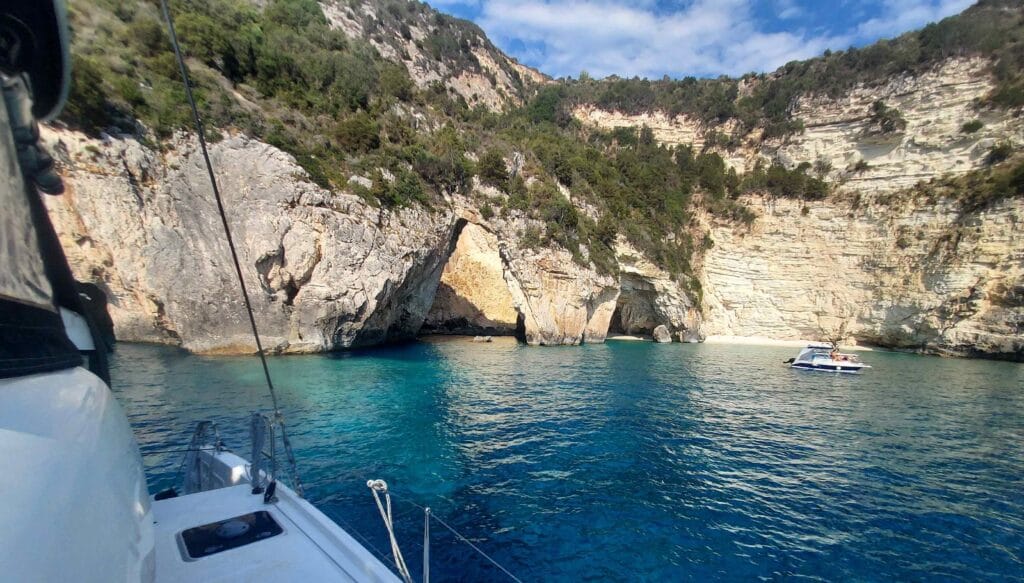
The picture above doesn’t show the depth and rich colors of the coves inside. They are truly hidden coves. This is what we discovered when we took our GoPro with us which can also film underwater. We jumped from the swim plateau of the catamaran in the bright blue water which looked and felt like a swimming pool!
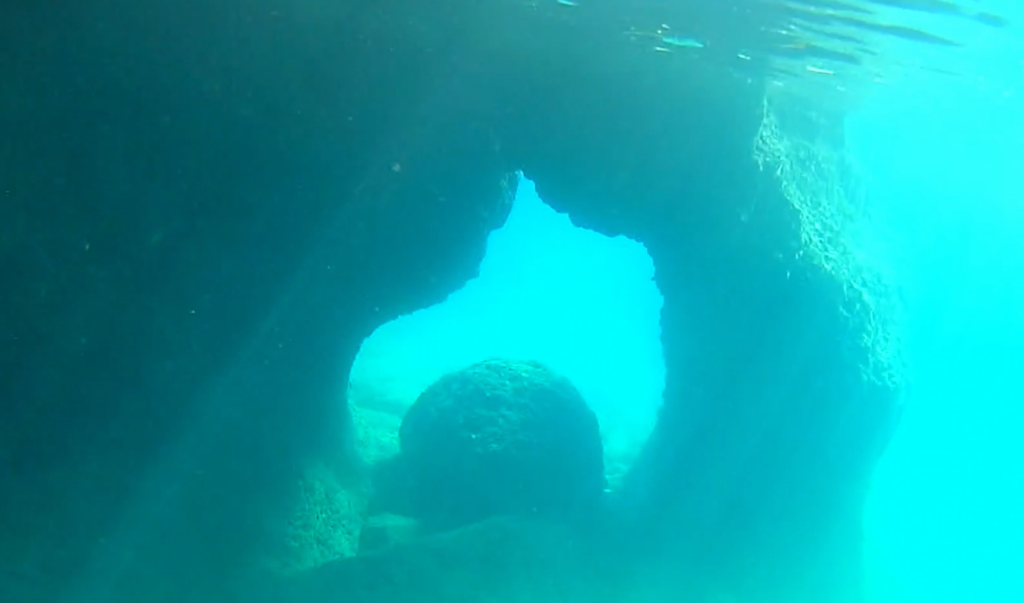
We snorkeled our way to the first cave. In that cove, we swam to the backwall and entered the second cove. You could feel the floor of the ‘connection rock’ between the 2 coves. And the last cove was spectacular, spectacular, almost luminous turquoise water and a high round ceiling with a hole in it, raised before our eyes.
Antipaxos
Later that morning we made the small crossing to Antipaxos, the small island below Paxos which was even more pristine. It had also beautiful beaches and bay, and less tourism, so often not a harbor or a pontoon where you could put your dinghy to go ashore. So when we anchored in a bay, we took our dinghy to the beach and pulled it up and then we took a nice walk under the cypresses and other trees.
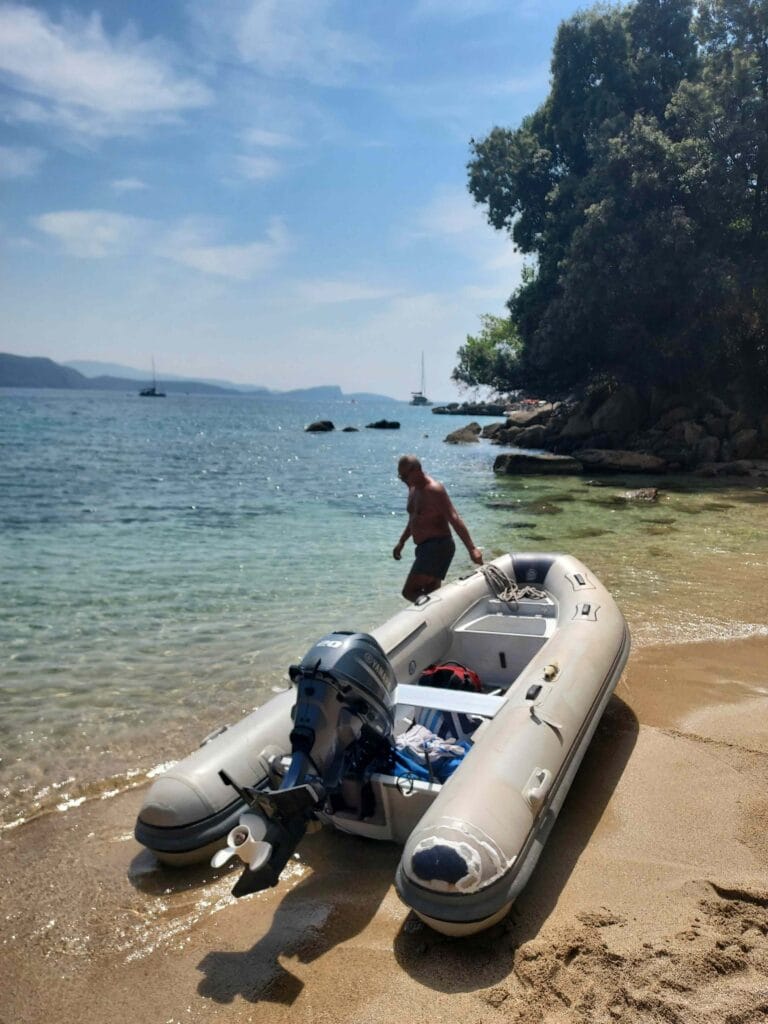
This trip along these 4 places, Sivota, Parga, Paxos and Anitpaxos reminds us of the freedom and beauty of sailing. Each destination had it’s own charm and showed us why sailing in Greece is so popular among sailors worldwide.
